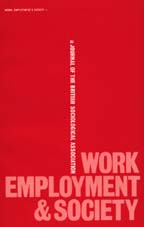No CrossRef data available.
Article contents
REINVENTING TRADITIONAL SOLUTIONS: JOB CREATION, GENDER AND THE MICRO-BUSINESS HOUSEHOLD
Published online by Cambridge University Press: 01 December 1998
Abstract
There has been overwhelming interest in the numbers of jobs attributable to the formation and growth of new small firms but comparative silence about their working practices. We offer two novel, inter-linked approaches to thinking about work and employment in small firms. Firstly, we use a methodological approach which takes a household level analysis as a starting point, making gender a foundation stone. Secondly, we use an institutional perspective which focuses on power and power relations. From quantitative and qualitative empirical work with micro-businesses in business services we show that family work can be a vital resource. Yet there can also be severe costs, particularly for the many women who participate in business alongside their husbands as co-owners, employees and unpaid helpers. Gender divisions of labour are, typically, reproduced in traditional fashion. Even when business owners bring in employees from outside the family, relations within the micro-business are not fully market relations. Conflicts arise as business/owners and their employees struggle to manage these partially decommodified relations. The micro-business service sector actually represents a return to traditional ways of organising business by integrating business and household so that the traditional embedding of business and family of in-between pre-modern institutions is reinvented.
- Type
- Research Article
- Information
- Copyright
- © 1998 BSA Publications Ltd




